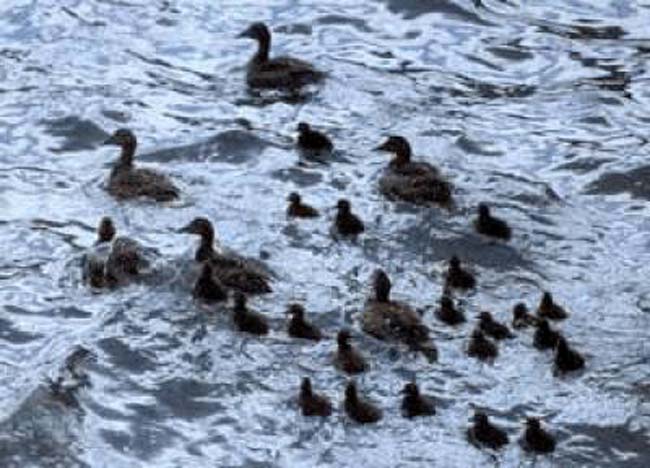Birds of a Feather Haggle Together

Birds of a feather certainly flock together, and with one species they also haggle and form cliques and divide tasks. And as with humans, the social system among these odd ducks sometimes breaks down.
A new study reveals for the first time in ducks a phenomenon called “cooperative breeding,” in which multiple parents share such tasks as scanning for predators and feeding young.
The research focused on group parenting among bulky sea ducks called eiders. Hens come to a common rearing area with their young to get to know the other mother ducks. They socialize, bargain and even fight with one another until they sort themselves into cliques of two, three or four.
"The socializing during the period prior to group formation is devoted to the searching for and negotiating with a suitable partner," explained study team leader Markus Öst of the University of Helsinki.
Occasionally, the coalition may break up after a few days if partners find they are ill-suited for one another, the researchers write in the January issue of the American Naturalist magazine.
The suitably partnered hens work together to keep the ducklings warm, well fed and protected against predators, making sure that everything is, well, ducky.
"Waterfowl have a reputation as being none-too-bright, but we think they are careful, sophisticated bargainers," Öst said.
Get the world’s most fascinating discoveries delivered straight to your inbox.
- Images: Rare and Exotic Birds
- Mating Game: The Really Wild Kingdom
- The Strangest Animal Stories of 2006
- Early Birds Were Just Ducky
- Bird Brains Actually Brilliant
- All About Birds



